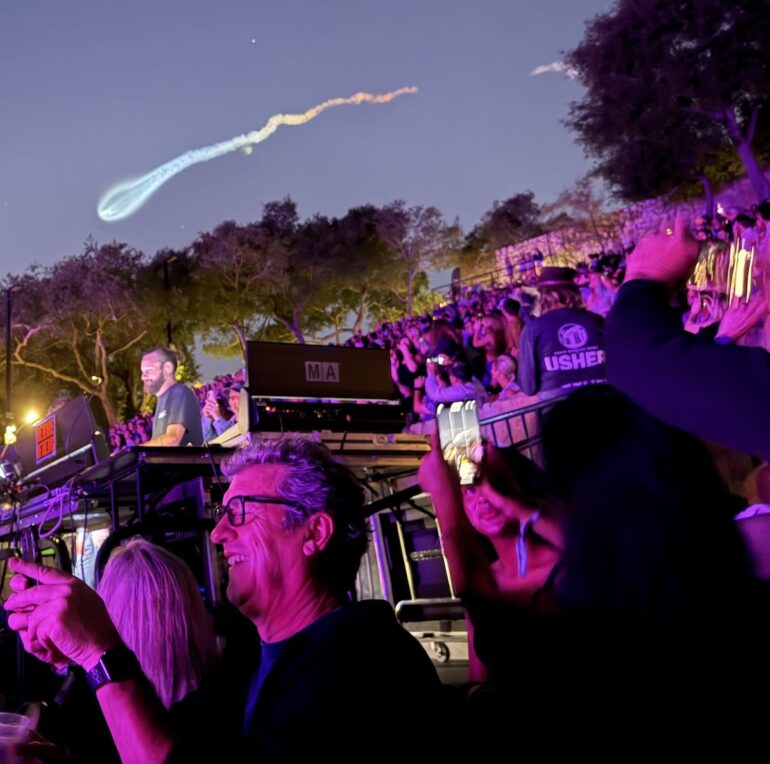A couple of weeks ago, we watched as the first stage of a rocket launch descended back toward Earth, and it was spectacular. I’d love to know more about what exactly I’m seeing, though. Why is it that shape? Why is the tail those colors? Is there a rocket scientist who can explain why it looks the way it does? —E.
Full disclosure: the question is mine. After the Public Affairs department at Vandenberg Space Force Base didn’t deign to respond, I remembered we have a world-class university right here. UCSB’s media relations rep directed me to adjunct professor Andy Howell—having once appeared on Siteline, he was happy to help.
That’s a great shot! I took one at almost exactly the same time! It was during Caamp’s concert at the Santa Barbara Bowl. The band actually pointed it out while they were onstage, and it kind of stopped the show for about a minute while everyone just watched it instead.
What we’re seeing in that picture is the launch of Starlink satellites on July 18. You can see that launch from another perspective here. The exhaust from twilight launches appears to glow, because, while the sun has set from our perspective on the ground, at the altitude the rocket is at, it is still lit up by the sun.
I think this is actually the second stage, not the return of the first stage. It looks like it’s coming “downward” to the horizon, but it is in fact going higher into orbit, just away from the viewer, and is about to curve over the horizon. It’s simultaneously going south, because launches from Vandenberg almost always go that way, to achieve a polar orbit. Here are some clues as to how you can tell:
1. In your picture, there’s a single, continuous exhaust plume. But in mine, you see, after a gap, there is another part to it. The right hand part is the first stage, which shuts off, and then the plume continues when the second stage ignites.
2. The “ballooning up” to the left is because the rocket has reached higher up in the atmosphere, where the density of the atmosphere is lower, so the gasses expand more.
3. Look at the colors. The plume is red on the right, because of scattering of sunlight in the lower atmosphere, for exactly the same reason sunsets are red (the sun is shining through more atmosphere on the horizon). But to the left, the plume is in direct sunlight, at higher altitude, with less atmosphere to scatter it, so it is blue.
4. Finally, check out this glorious set of images and a time lapse from another launch. Look at panel 3 there (the time lapse) and read the description. You can see the big “jellyfish” plume of the second stage (what we are seeing in your image), but you can also briefly see the reentry burn of the first stage.
Thank you, Andy! He has more to teach us on his ScienceVsCinema YouTube channel and in person at Las Cumbres Observatory‘s monthly bar night, Astronomy on Tap, where he’s a co-host. The next one is August 14 at M. Special’s taproom on State Street.
